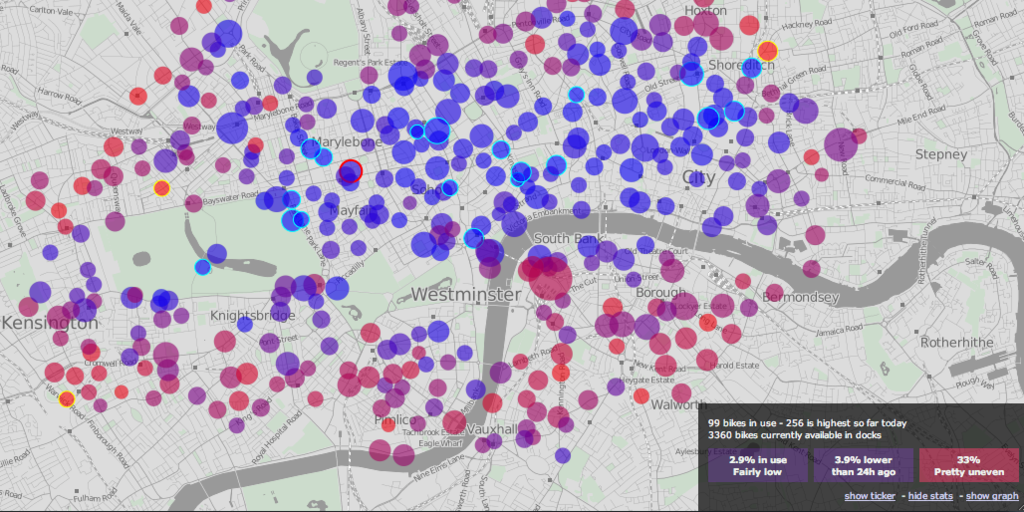As bike share programs continue to pop up around the world, so does more technology aimed at tracking and exploring these programs. But, given that the definition of bike share seems to vary by person and by region, as well as the fact that these programs are both publicly and privately owned (or somewhere in between), tracking bike share is far from standardized.
Beginning globally, according to Wikipedia, there are approximately 200 public bike share programs in the world as of 2010. Wikipedia's source for this information is the New Zealand Herald, whose source is a local transportation report, which could not be located in the public sphere.
The Bike-sharing Blog boasts approximately 300 jurisdictions on its Bike-sharing World Map, but many of these location markers have not been updated in several years. This map, which began as an offshoot of the blog in October of 2007, is updated by Paul DeMaio and Russell Meddin, and has received more than one million views since its inception.
View The Bike-sharing World Map in a larger map
On the surface, the Bike-sharing World Map seems like a very useful tool. If you are traveling, you could check out the map to see which of your travel destinations has a bike share scheme in place. If you are a transportation planner, you could reference the map to find out if similar cities are developing or utilizing bike share programs. According to DeMaio, this map is for "everyone with an interest in bike sharing."
Unfortunately, DeMaio also states that the map "has gotten large and unwieldy" as these two guys have spent hundreds of hours trying to keep more than 300 location markers up to date. They do most of the research themselves, but some of the information seems so incomplete that it is difficult to understand how certain cities made it onto the map at all.
On a more local scale, Oliver O'Brien, has created live bike share maps that depict real time bike share usage in a number of cities around the world. While this list of cities is much shorter than DeMaio's list, the information offered for each city is more in-depth and can be of greater use to people on a daily basis.

It is fascinating for me to be sitting in my living room in Washington, DC, monitoring bike share usage in Vienna, Austria and Barcelona, Spain. What is even more exciting is to take a look at the activity in DC and to see, before heading out, how many bikes are in use, how many bikes are currently docked, and at which stations.
And, of course, there's an app for that. If you are not interested in the overall picture of worldwide bike sharing and you are more concerned about actually using the bikes in your local bike share program, there are mobile device apps in many cities that help you to locate the nearest bike share station and in some instances, offer bike trail support. Spotcycle is "your personal bike-sharing assistant" in Montreal, London, Melbourne, Minneapolis and DC, and is available for iPhone, BlackBerry and Android devices.

In the 1960s, the first semblance of bike sharing appeared in Amsterdam with the White Bicycle Plan in which a handful of bikes were left around the city and intended for ride-and-drop transportation. In the last forty years, we have come a long way. Not only have we drastically improved bike share infrastructure with automated stations and incredibly durable bikes, but we have also seen technology develop in the periphery as phone apps and real time maps help us make the most of these bike share systems.